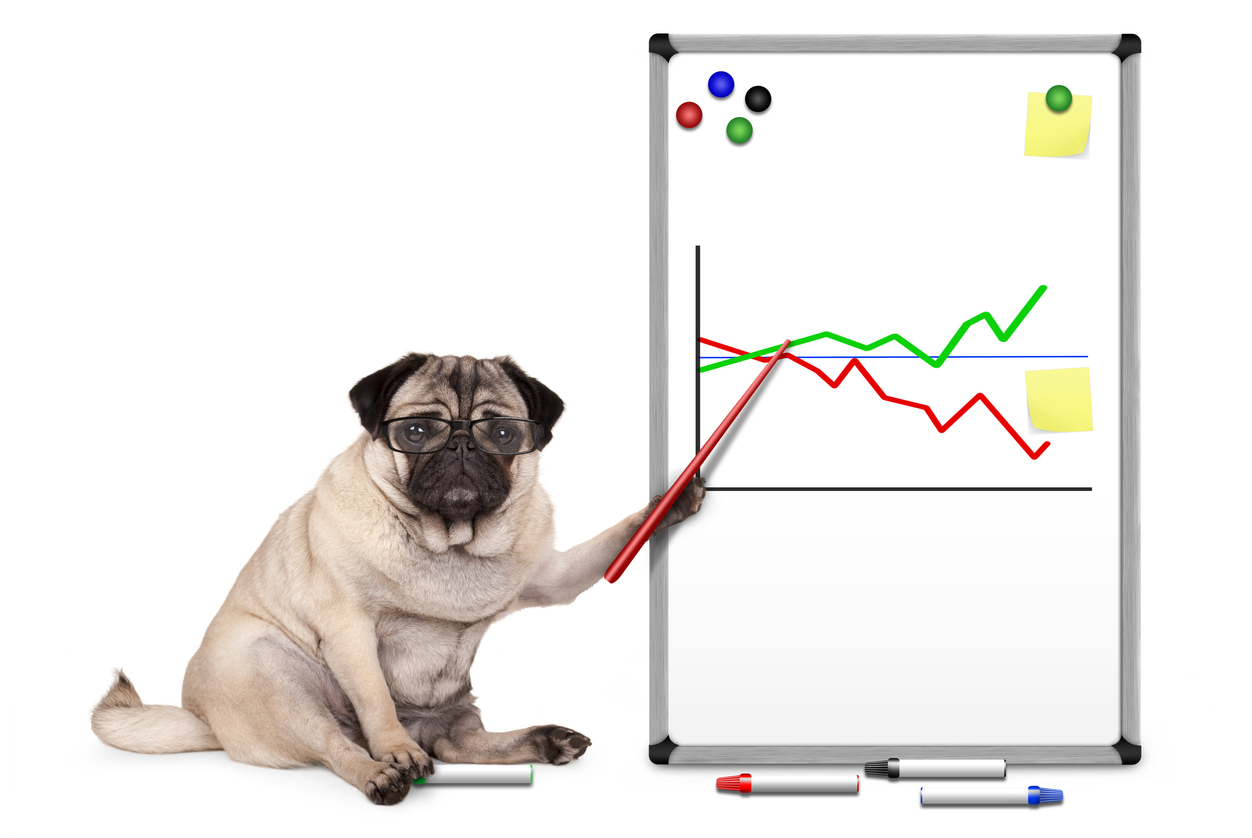
What is a ‘dog fund’ and what should you do if you hold one in your portfolio? We look at some of the facts behind the ‘dog fund’ label, highlight the big names in the doghouse, and explain how fund reviews can keep your investments on track.
What is a dog fund?
Every year, Bestinvest publishes its ‘Spot the Dog’ research. In the September 2020 update, the investment firm identified 150 funds officially in the doghouse, the highest number for 25 years.
To earn the notorious ‘dog’ tag, a fund must deliver a worse return than the market it invests in over three consecutive 12-month periods, and must also have underperformed that market by 5% or more over a full three-year period. The research focuses on unit trusts and open-ended investment companies (OEICs) listed in the equity sectors covered by the Investment Association.
This performance criteria is used to help identify those funds that are consistently poor performers, rather than those that have simply suffered a difficult year. It also filters out tracker funds that aim to replicate the return of a market index (minus running costs). What this means is that behind every dog fund, there’s a fund manager looking very sheepish.
What characteristics do dog funds share?
Just as with most other facets of life, there are often lots of reasons behind the disappointing performance of a dog fund. The most recent list of 150 offenders features a number of former high-flying equity funds that did really well for a few years, before crashing back down to earth. Other funds have just continued to plod along, falling further behind their peers and the returns of the market, while still charging high fees for the privilege. Sometimes, things can go horribly wrong for so-called ‘star’ fund managers and for fund management companies.
Perhaps the greatest example of spectacular dog fund fails is the story of the rise and fall of Neil Woodford. When he was at Invesco Perpetual, Woodford ran the Invesco Perpetual Income and High Income funds and was the UK’s most famous and respected fund manager. After Woodford left Invesco in 2014 to start his own fund management company, Invesco never really recovered. Its funds have earned it the unenviable reputation of having the most dog funds in the research for five years in a row.
But after striking out on his own, Neil Woodford hasn’t fared any better either – instead he has ended up ruining his reputation and his legacy. His LF Woodford Equity Income fund became a regular in dog fund tables until it was forced to suspend dealing and ultimately close down in 2019, with investors bearing the brunt of heavy losses.
Repeat offenders in the doghouse
One of the most troubling aspects of the most recent Spot the Dog report is the sheer size of the investments within these dog funds. According to Bestinvest, the 150 worst performers hold a staggering £54.4 billion in assets from long-suffering investors. And 18 of these funds manage more than £1 billion each in assets.
Which sectors feature the most dogs?
The UK Equity and Global Equity Income sectors have the highest proportion of dog funds (26% in UK Equity Income, and 25% in Global Equity Income, respectively). However, it’s only fair to point out that this poor performance has been added to by the sudden suspension of dividend payments from traditional high-dividend paying companies during the pandemic months of 2020.
Why are dog funds dangerous?
As Bestinvest noted in their most recent report, the average fund in the Investment Association UK All Companies sector posted a loss of 5.1% over its three-year period. But the worst dog fund in the same sector fell by 51%, whereas the best performer achieved a positive return of 34%. That kind of underperformance is just not acceptable, and really demonstrates why it is so important sometimes to cut your losses.
Which fund providers have the most dogs?
Keeping a watchful eye over the performance of the funds you hold is important. Not only does it ensure that you hold a healthy balance of good performers, but it can help to identify any red flags that you might want to take notice of, such as when an investment company has an unhealthy number of consistently poor performers.
As already highlighted, Invesco has become highly synonymous with the dog fund reputation – proving that old saying about “giving a dog a bad name”. Across all sectors, Invesco currently has 13 funds classed as ‘dogs’ (although two of these funds have since merged). Together, these funds have a total value of £11.4 billion – which means Invesco is responsible for managing just over one-fifth of all assets held within dog funds.
Snapping at Invesco’s heels is St James’ Place, which features eight dog funds across all sectors, with £6.9 billion invested. Fidelity has four dog funds, holding a combined total of £3.9 billion. And Schroders also deserves a dishonourable mention, with a total of ten dog funds featured for a combined value of £2.7 billion. When you think about it, this is an awful lot of money that’s failing to deliver a respectable return for investors.
Putting things into perspective
But just because a fund has made an appearance in the dog fund tables doesn’t necessarily mean it should be immediately sold. After all – as we are often quick to point out – past performance really is no guide to the future. Fund management companies could already be taking action behind the scenes to improve the performance of some of their repeat offenders, either by changing fund managers, merging underperforming funds, or redesigning the fund’s investment strategy and approach. Sometimes it’s well worth sticking with a fund while they go through this process.
But knowledge is power, and knowing whether a fund is suffering from just a short-term blip, or whether the fund management company has a lot of poorly performing funds can really help when it comes to asking the right questions and making informed investment decisions.
Talk to us for a comprehensive fund review
If you haven’t reviewed your investments for a few months, now might be a good time to come to us for a review of your holdings. We can help you to identify any poor performers, and help you to decide whether it’s worth sticking with those funds for the time being, or whether it’s time to look for better opportunities elsewhere. But it’s always worth having a discussion with us before making any investment decisions.
Dogs have many attractive qualities, loyalty being one of them. But holding onto poorly performing dog funds for too long can have a damaging impact on your long-term wealth.
If you are interested in discussing your investment portfolio with one of our experienced financial planners at FAS, please get in touch here.
This content is for information purposes only. It does not constitute investment advice or financial advice.





